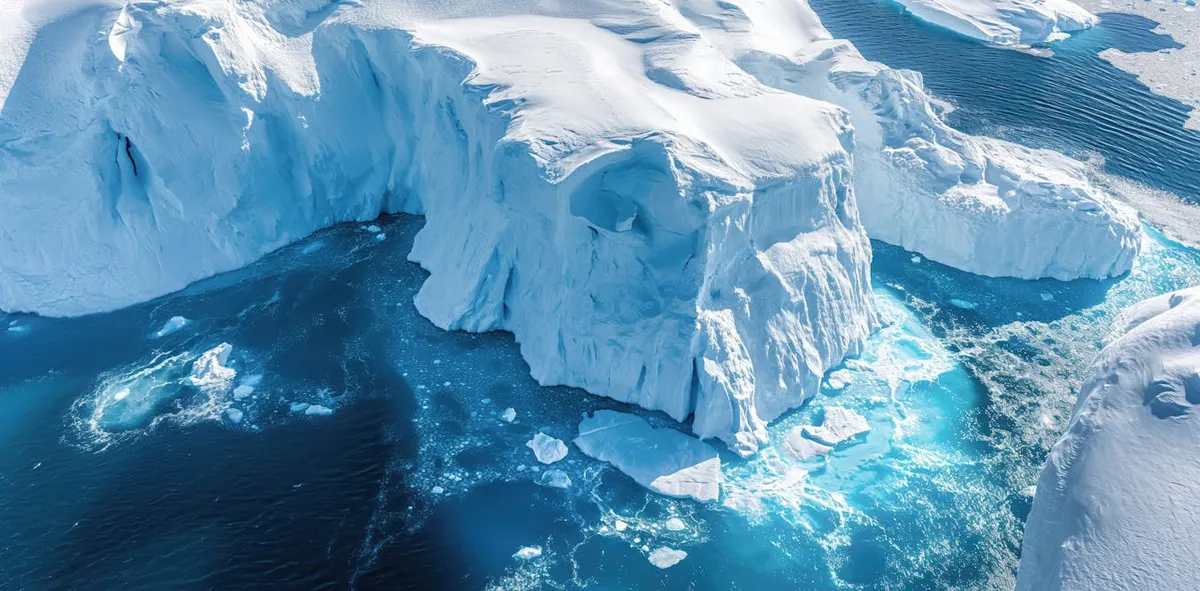
The Antarctic Circumpolar Current is the strongest ocean current on our planet, flowing clockwise around Antarctica. This powerful current is approximately five times stronger than the Gulf Stream and over 100 times more robust than the Amazon River. As a vital part of the global ocean “conveyor belt,” it connects the Pacific, Atlantic, and Indian oceans, playing a crucial role in regulating Earth’s climate and distributing water, heat, and nutrients worldwide.
However, the situation is changing. Fresh, cool water from melting Antarctic ice is diluting the salty ocean water, which poses a significant threat to this essential ocean current. Recent research indicates that the Antarctic Circumpolar Current could slow down by 20% by the year 2050 due to rising global temperatures, with potentially severe implications for life on Earth.
The Antarctic Circumpolar Current acts like a protective moat around the icy continent of Antarctica. This current helps keep warmer waters at bay, safeguarding the vulnerable ice sheets from accelerated melting. Additionally, it serves as a barrier against invasive species, such as southern bull kelp, and any animals that might hitch a ride on these rafts as they drift toward the continent.
Moreover, the current plays a significant role in regulating Earth’s climate. Unlike more familiar currents like the Gulf Stream along the U.S. East Coast, the Kuroshio Current near Japan, or the Agulhas Current off the coast of South Africa, the Antarctic Circumpolar Current is less understood. This lack of understanding is partly due to its remote location, which makes gathering direct measurements particularly challenging.
Ocean currents are sensitive to changes in temperature, salinity, wind patterns, and sea-ice extent. Consequently, the global ocean conveyor belt is vulnerable to the impacts of climate change. Previous studies have suggested that one critical component of this conveyor belt may be on the brink of catastrophic collapse.
Theoretically, warming waters around Antarctica should accelerate the current. The density changes and wind patterns in the region are crucial determinants of the current's strength. Warm water, being less dense, should ideally speed up the current. However, observations over recent decades show that the strength of the Antarctic Circumpolar Current has remained relatively stable, despite the melting ice surrounding it—an area that has not been thoroughly examined in prior scientific discussions.
Recent advancements in ocean modeling have enabled a more comprehensive exploration of potential future changes to the Antarctic Circumpolar Current. Using Australia’s fastest supercomputer and climate simulator in Canberra, researchers studied the current's behavior and strength. The underlying model, ACCESS-OM2-01, was developed by Australian scientists as part of the Consortium for Ocean-Sea Ice Modelling in Australia.
This sophisticated model captures critical features often overlooked by other models, such as ocean eddies. It provides a more accurate assessment of how the current's strength and behavior will evolve as global temperatures rise. Projections indicate that cold, fresh meltwater from Antarctica will move northward, filling the deep ocean and altering its density structure. This process counteracts the warming influence of the ocean, ultimately leading to an overall slowdown of the current by as much as 20% by 2050.
The potential weakening of the Antarctic Circumpolar Current could have wide-ranging and profound consequences. As the primary current circulating nutrient-rich waters around Antarctica, it is vital for the region's ecosystem. A diminished current could lead to reduced biodiversity and decreased fishery productivity, which many coastal communities depend on for their livelihoods. Furthermore, the weakened current may facilitate the entry of invasive species, such as southern bull kelp, into Antarctic waters, disrupting local ecosystems and food webs.
Additionally, a slower current could allow warmer waters to extend further south, intensifying the melting of Antarctic ice shelves and contributing to global sea-level rise. This faster ice melting could create a feedback loop, further weakening the current and initiating a spiral of slowdown.
While the findings regarding the Antarctic Circumpolar Current paint a concerning picture, the future is not set in stone. Collective efforts to reduce greenhouse gas emissions could still mitigate the extent of melting ice around Antarctica. Establishing long-term monitoring programs in the Southern Ocean will be essential for accurately tracking these changes.
With coordinated international action and proactive measures, we can tackle the effects of climate change on our oceans and preserve the integrity of the Antarctic Circumpolar Current. The authors of this research extend their gratitude to Polar Climate Senior Researcher Dr. Andreas Klocker from the NORCE Norwegian Research Centre and Bjerknes Centre for Climate Research, as well as Professor Matthew England from the University of New South Wales, for their contributions to this vital study.